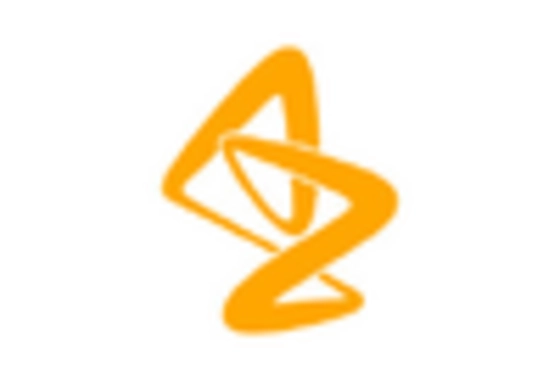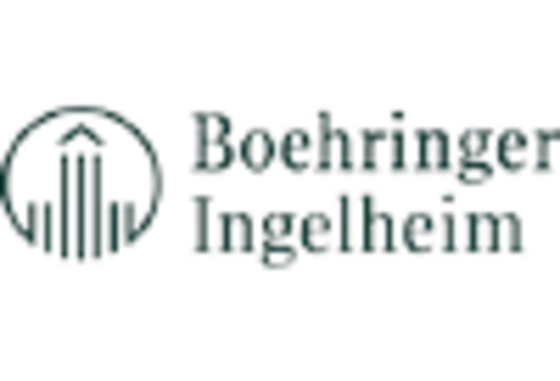Advancements in Treatment Modalities
Innovations in treatment modalities are significantly influencing the Polycystic Kidney Disease Treatment Market. Recent advancements in pharmacological therapies, including the development of targeted therapies and novel drug formulations, are enhancing treatment efficacy and patient outcomes. For instance, the introduction of tolvaptan, a vasopressin receptor antagonist, has shown promise in slowing the progression of kidney function decline in patients with autosomal dominant PKD. Such advancements not only improve patient prognosis but also expand the treatment options available, catering to diverse patient needs. Furthermore, ongoing clinical trials and research initiatives are likely to yield new therapeutic agents, thereby enriching the treatment landscape. The continuous evolution of treatment modalities is expected to attract significant investment from pharmaceutical companies, fostering a competitive environment that benefits patients and healthcare providers alike.
Regulatory Support and Policy Initiatives
Regulatory support and policy initiatives play a vital role in shaping the Polycystic Kidney Disease Treatment Market. Governments and regulatory bodies are increasingly recognizing the need for effective treatments for chronic kidney diseases, including PKD. This recognition has led to the establishment of favorable policies aimed at expediting the approval process for new therapies and ensuring patient access to innovative treatments. For instance, initiatives that promote orphan drug designation for rare diseases can incentivize pharmaceutical companies to invest in PKD treatment development. Furthermore, regulatory frameworks that support clinical trials and research funding are likely to enhance the overall treatment landscape. As a result, the supportive regulatory environment is expected to facilitate the introduction of new therapies, ultimately benefiting patients and healthcare systems.
Growing Awareness and Education Initiatives
The increasing awareness and education initiatives surrounding polycystic kidney disease are pivotal in shaping the Polycystic Kidney Disease Treatment Market. Enhanced public and professional education about PKD symptoms, risk factors, and treatment options is crucial for early diagnosis and intervention. Organizations and healthcare providers are actively engaging in campaigns to disseminate information, which is likely to lead to higher rates of diagnosis and treatment uptake. As awareness grows, patients are more inclined to seek medical advice, thereby increasing the demand for effective treatment solutions. Moreover, educational initiatives targeting healthcare professionals ensure that they are well-equipped to recognize and manage PKD, further contributing to market growth. This heightened awareness not only benefits patients but also encourages research funding and collaboration among stakeholders, ultimately advancing the treatment landscape.
Rising Prevalence of Polycystic Kidney Disease
The increasing incidence of polycystic kidney disease (PKD) is a primary driver for the Polycystic Kidney Disease Treatment Market. Recent estimates suggest that PKD affects approximately 1 in 400 to 1 in 1,000 individuals, leading to a growing patient population requiring treatment. This rising prevalence necessitates the development and availability of effective therapeutic options, thereby stimulating market growth. As awareness of the disease expands, more individuals are being diagnosed, which further propels the demand for innovative treatment solutions. The need for effective management strategies for PKD is underscored by the potential complications associated with the disease, including kidney failure and hypertension, which can significantly impact patients' quality of life. Consequently, the increasing prevalence of PKD is likely to drive investments in research and development, ultimately enhancing the treatment landscape.
Increasing Investment in Research and Development
The surge in investment in research and development (R&D) is a critical driver for the Polycystic Kidney Disease Treatment Market. Pharmaceutical companies and research institutions are allocating substantial resources to explore novel therapeutic approaches and improve existing treatment options for PKD. This focus on R&D is essential for addressing the unmet medical needs of patients suffering from this chronic condition. Recent data indicates that the global pharmaceutical R&D expenditure has reached unprecedented levels, with a significant portion directed towards renal diseases, including PKD. Such investments are likely to accelerate the discovery of innovative therapies and enhance the overall treatment landscape. Additionally, collaborations between academia and industry are fostering a conducive environment for groundbreaking research, which may lead to the development of more effective and targeted treatments for PKD.

















Leave a Comment